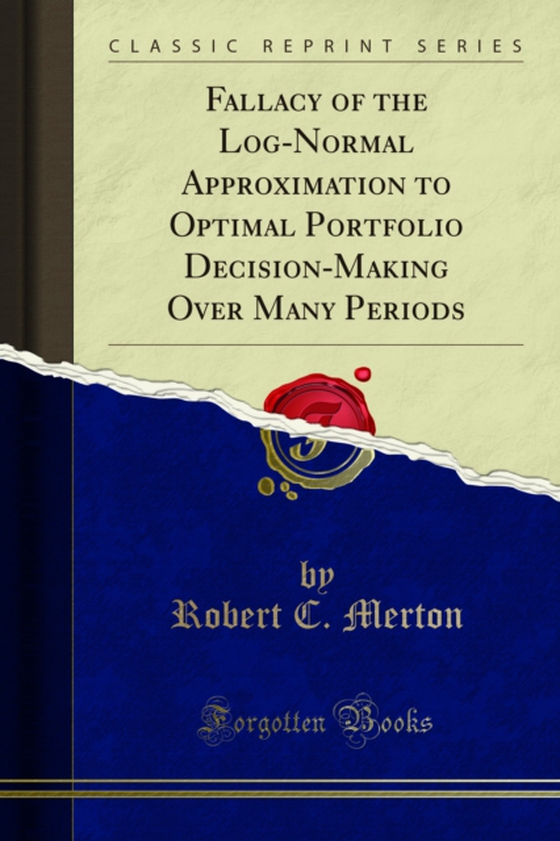
Fallacy of the Log-Normal Approximation to Optimal Portfolio Decision-Making Over Many Periods e-bog
59,77 DKK
(inkl. moms 74,71 DKK)
Whilst the greatest effort has been made to ensure the quality of this text, due to the historical nature of this content, in some rare cases there may be minor issues with legibility. Thanks to the revival by von Neumann and Morgenstern, maximization of the expected value of a concave utility function of outcomes has for the last third of a century generally been accepted as the correct criter...
E-bog
59,77 DKK
Forlag
Forgotten Books
Udgivet
27 november 2019
Genrer
Probability and statistics
Sprog
English
Format
pdf
Beskyttelse
LCP
ISBN
9780259688303
Whilst the greatest effort has been made to ensure the quality of this text, due to the historical nature of this content, in some rare cases there may be minor issues with legibility. Thanks to the revival by von Neumann and Morgenstern, maximization of the expected value of a concave utility function of outcomes has for the last third of a century generally been accepted as the correct criterion for optimal portfolio selection. Operational theorems for the general case were delayed in becoming recognized, and it was appropriate that the seminal breakthroughs of the 1950's be largely preoccupied with the special case of mean-variance analysis. Not only could the fruitful Sharpe-Lintner-Mossin capital asset pricing model be based on it, but in addition, it gave rise to simple linear rules of portfolio optimizing. In the mean-variance model, the well-known Separation or Mutual-Fund Theorem holds; and with suitable additional assumptions, the model can be used to define a complete micro-economic framework for the capital market, and a number of empirically testable hypotheses can be derived. As a result, an overwhelming majority of the literature on portfolio theory have been based on this criterion.
 Dansk
Dansk

